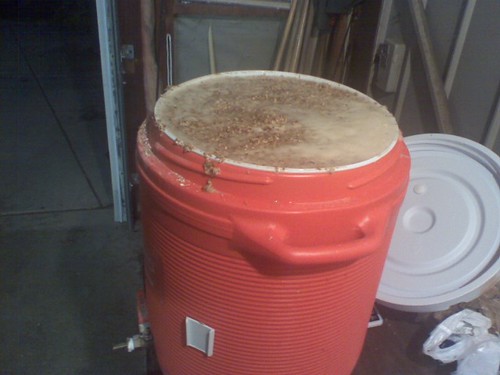 I've always been curious about my extract efficiency. I dug around and read several articles about it. A lot of them are just flat out confusing. I found a pretty basic one, that explains the breakdown like this:
I've always been curious about my extract efficiency. I dug around and read several articles about it. A lot of them are just flat out confusing. I found a pretty basic one, that explains the breakdown like this: 1. Multiply the amount of grains you used by the potential maximum extract from your grain. You can find them online, here's a list of some popular grains (click here), I didn't see my Maris Otter on there, so I just googled "maris otter extract potential" and several sites came up.
2. Once you have these numbers, multiply them by the amount of grains you used. So, with my most recent IPA i brewed, here's the breakdown:
20 lb Maris Otter x 38 = 760
4 lb Munich x 37 = 148
2 lb Crystal x 34 = 68
===============================
976
3. Take this final number, and divide it by the number of gallons of wort you collected, in my case, I collected exactly 12 gallons. 12/976 = 81.3 points
4. Next, and this part is tricky, but bear with me: Take your specific, pre-boil gravity number, mine, was 1.072. Take the last two numbers, and and divide your total points from step 3 by this. So: 81/72 = 88%
I'm guessing this is how it's done. After reading several articles, I think I have this all together right. Correct me anyone, if this is wrong.
But 88% sounds pretty good to me. I was wondering how I was doing in this area. I know there are a lot of factors that can effect the efficiency. Using a refractometer, crushing the grain better, proper sparging temperatures, etc. Here's a thread with some interesting tips on boosting your extract efficiency - (click here).




No comments:
Post a Comment